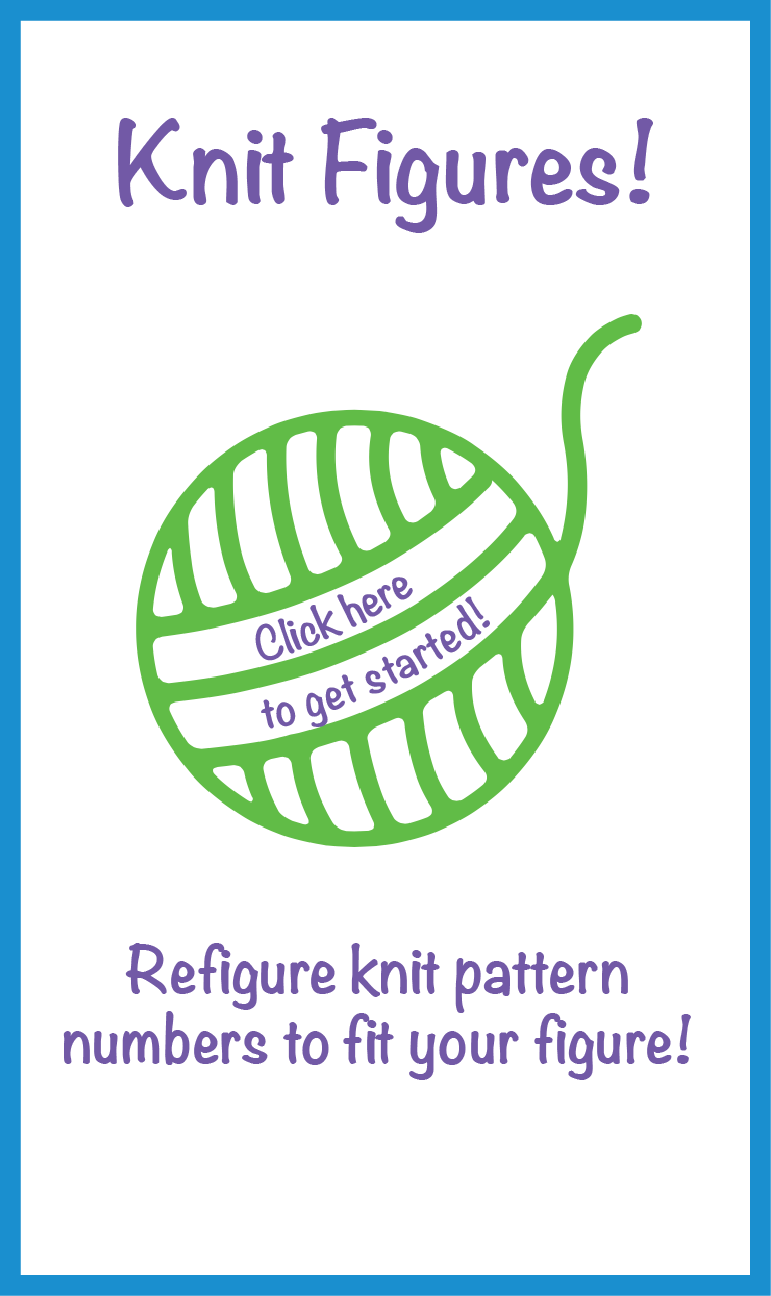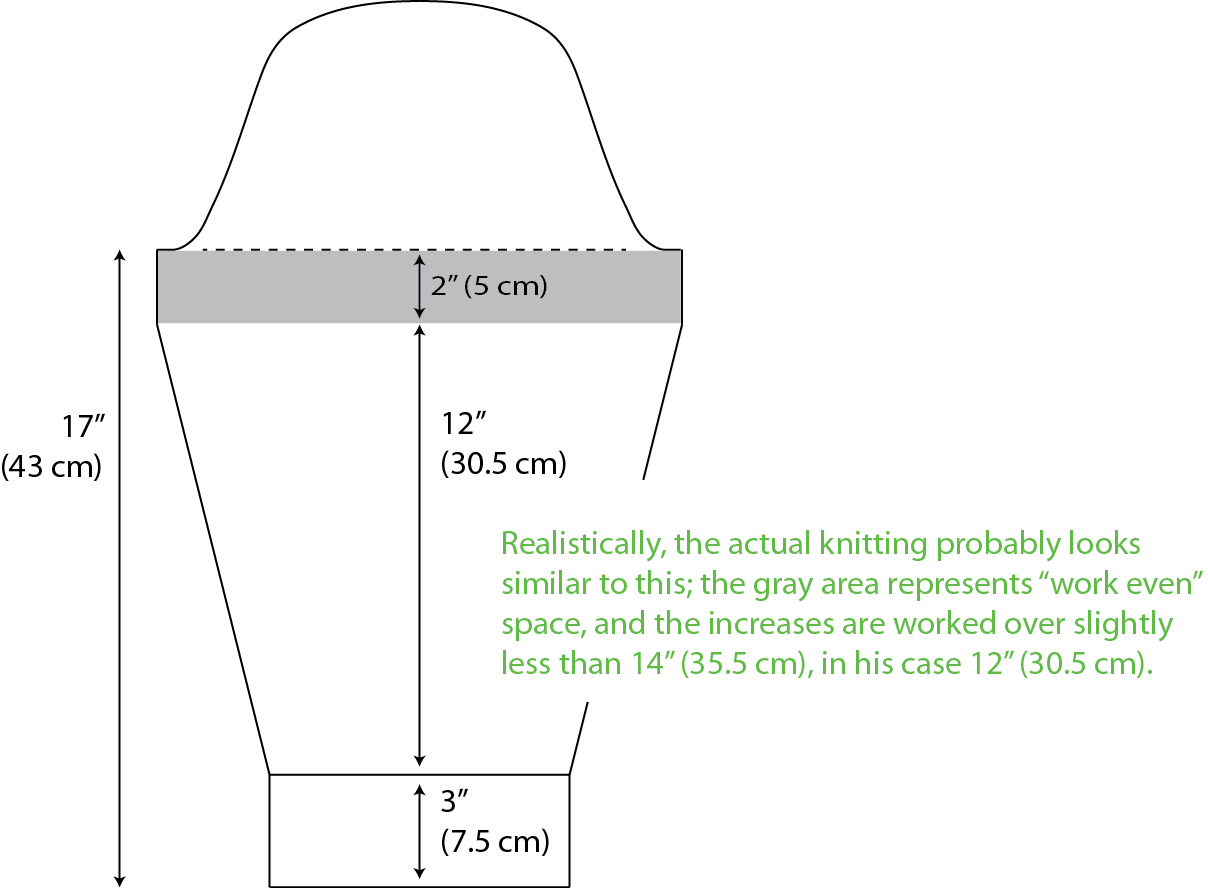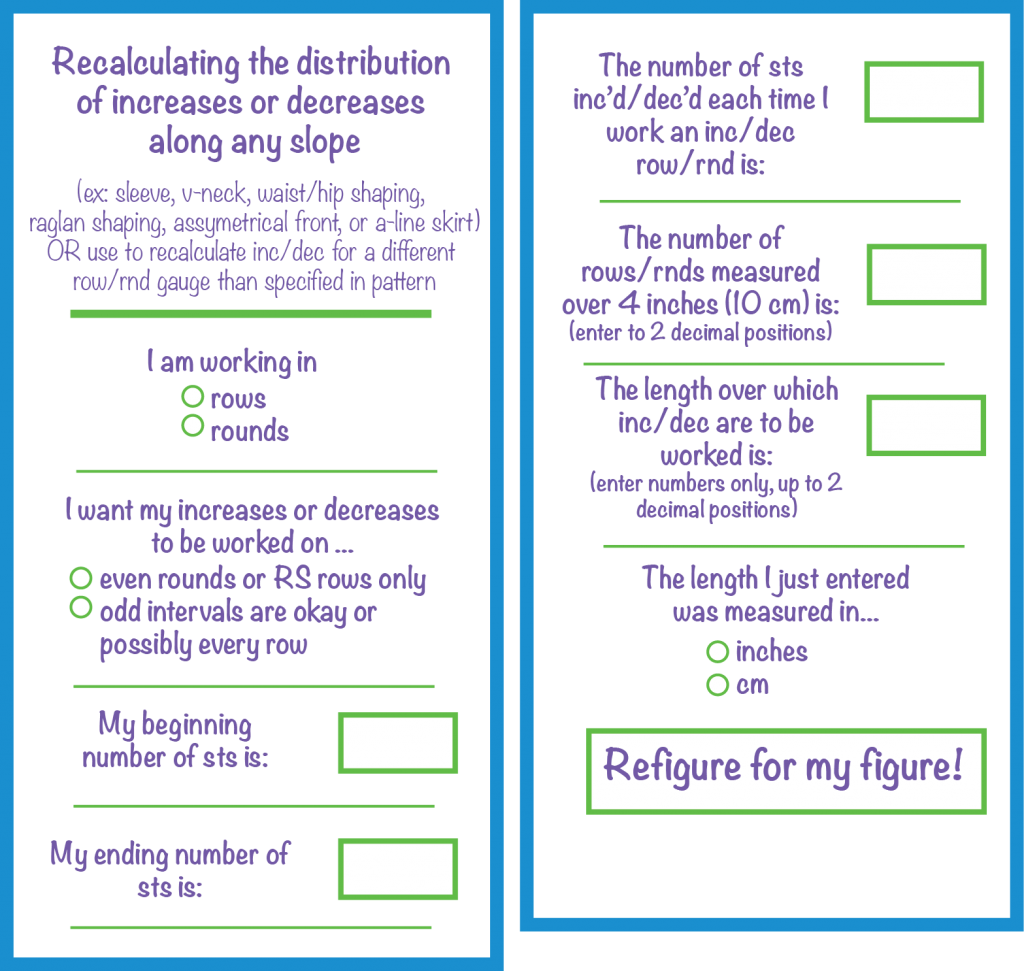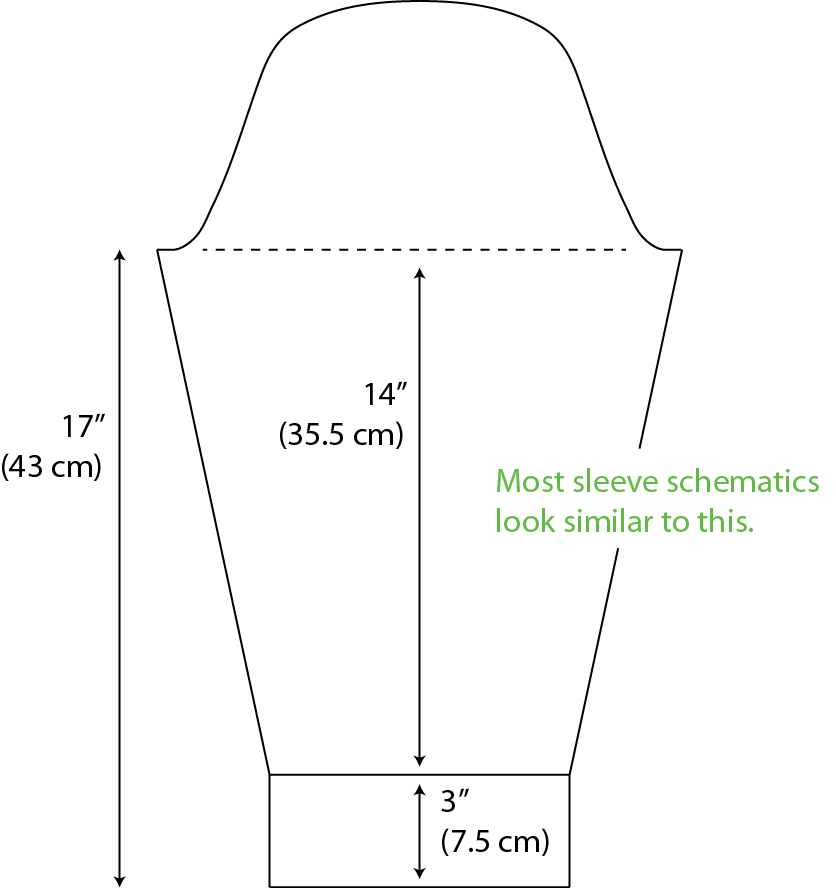Check Out The Demo Video!
Enlarge the video for best viewing!

Knit Figures! is currently available in the App Store for iPhones and iPads. Android users, you have not been forgotten! Send a note via the Contact form if you'd like to be notified when the Android version is available. Release is targeted for April 2016.
4/11/16: Knit Figures! is now available for Android phones and tablets in the Google Play store!
The Knit Figures! app is a companion tool for knitters to customize the fit of their garments anywhere increases or decreases are worked along a slope. The key to Knit Figures! is that it has the ability to recalculate shaping along a slope to accommodate your row/round gauge and to adjust garment pieces to the length that fits you! You tell the app what you want, and the app delivers your custom instructions.
Imagine the different scenarios where sloped increases and decreases are used: sleeves, raglan shaping, assymetrical cardigan fronts, V-necks, a-line skirts, and waist/hip shaping. If your row gauge doesn't match the gauge stated in the pattern, the fit of the garment will be affected.
Download the power to recalculate slopes and knit confidently knowing that your garment will fit!
Knit Figures! has the flexibility to calculate your increases/decreases to your customized length and/or row/round gauge when it differs from that which the designer has stated whether you are:
⇒ working in rows or rounds
⇒ working from the top down or vice-versa
⇒ increasing/decreasing any number of sts per increase/decrease row/round
⇒ increasing/decreasing only on even (RS) rows/rounds or can accommodate odd rows/rounds
⇒ and returns all measurements based on your preferred unit of measurement (inches or centimeters).
It only takes a few seconds to input your data and preferences and Voila!, the app displays your custom calculation on your iOS mobile device. (Stay tuned, Android will come later!)
Take a Closer Look at How Knit Figures! Works
For example, consider a basic set in sleeve. Most pattern schematics look similar to the schematic below.
The number of sts around the upper arm is almost always more than the number around the lower arm, and you can see the sloped increase edges. Some basic dimensions are displayed. Let's look at this in a little more detail.
 For this example, let's assume the set-in sleeve is knit in rows from the bottom up. You have 60 sts after completing the cuff, and you are increasing to 80 sts at the upper arm. You are increasing 2 sts on each increase row, and your row gauge is 26 rows = 4" (10 cm) or 6.5 sts per inch (2.5 cm). The instructions say to increase one stitch at each edge every 6 rows, one time, then every 8 rows, nine times. You know from the schematic diagram that these increases are to be worked over a length of 14 inches to the underarm. This is somewhat misleading. If you add up the total number of rows used in the increases, you will find that the increases are completed in 78 rows [ (6 x 1) + (8 x 9)]. At the stated row gauge, that is 12" (30.5 cm). The discrepancy occurs because many designers allow a short distance at the top of sleeves to work even before reaching the underarm. That's a good thing, but that gray "work even" area is not usually reflected in pattern schematics.
For this example, let's assume the set-in sleeve is knit in rows from the bottom up. You have 60 sts after completing the cuff, and you are increasing to 80 sts at the upper arm. You are increasing 2 sts on each increase row, and your row gauge is 26 rows = 4" (10 cm) or 6.5 sts per inch (2.5 cm). The instructions say to increase one stitch at each edge every 6 rows, one time, then every 8 rows, nine times. You know from the schematic diagram that these increases are to be worked over a length of 14 inches to the underarm. This is somewhat misleading. If you add up the total number of rows used in the increases, you will find that the increases are completed in 78 rows [ (6 x 1) + (8 x 9)]. At the stated row gauge, that is 12" (30.5 cm). The discrepancy occurs because many designers allow a short distance at the top of sleeves to work even before reaching the underarm. That's a good thing, but that gray "work even" area is not usually reflected in pattern schematics.
But what if you have longer or shorter arms?
By plugging a few numbers (i.e. your preferences) in to the Knit Figures! app, a custom set of instructions to make the adjustment will be returned, allowing you to redistribute the same number of increases at your row gauge over the length you need to achieve the proper stitch count.
 The illustration to the right shows the same sleeve scenario, but shortened by 2" (5 cm). By entering the desired changes into Knit Figures!, the custom calculation would be to work the increases every 6 rows, seven times, then every 8 rows, three times. When you compare to the original instruction above, you will see that the increase row was worked 10 times in both cases, but in the latter case, the increases were completed in 12 fewer rows. The first case required 78 rows to complete, and the second scenario requires only 66 rows [(6 x 7) + (8 x 3)].
The illustration to the right shows the same sleeve scenario, but shortened by 2" (5 cm). By entering the desired changes into Knit Figures!, the custom calculation would be to work the increases every 6 rows, seven times, then every 8 rows, three times. When you compare to the original instruction above, you will see that the increase row was worked 10 times in both cases, but in the latter case, the increases were completed in 12 fewer rows. The first case required 78 rows to complete, and the second scenario requires only 66 rows [(6 x 7) + (8 x 3)].
Let's go back to the original sleeve length of 14" (35.5 cm) with the same allowance of 2" (5 cm) of "work even" at the top, but this time, recalculate based on a tighter row gauge of 28 sts per 4" (10 cm) or 7 sts per inch (2.5 cm). The custom recalculation would be to work the increases every 8 rows, eight times, then every 10 rows, two times, this time using 84 rows to complete the same number of increases in the specified length. Notice that in this scenario, as before, there is a total of 10 increase rows, but with the tighter row gauge, the intervals changed. Knit Figures! accommodates both your custom lengths and your specific row gauge!
If you aren't able to match your pattern's row gauge or you have non-standard body lengths or preferences, Knit Figures! gives you the control you need to adjust your pattern confidently.
How great will it be to have a sweater that actually fits correctly? You'll look great and feel good wearing it!
Converting Imperial Fractions to Decimals
⅛ = .13
¼ = .25
⅜ = .38
½ = .50
⅝ = .63
¾ = .75
⅞ = .88
Pointers for Deciding the Length Over Which to Recalculate
Sleeves: Allow a bit of "work even" length below the underarm. This can vary from as little as an inch (2.5 cm) for a child to 3 inches (7.5 cm) for a larger adult. If you are shortening sleeves, for an adult, 1½-2 inches (4-5 cm) of "work even" length should be adequate. If you are lengthening sleeves, still for an adult, the full 3 inches (7-8 cm) might be appropriate. The "work even" length is not included in the length over which you will recalculate Likewise, be sure to subtract any additional length that is not part of the length over which increases or decreases are worked, such as cuffs.
V-Necks: When working from the bottom up, many patterns have an inch (2-3 cm) of "work even" room at the top of the V-neck before binding off for the shoulders. You can decide whether or not to include this, but also consider whether you are doing short row shaping or stair-step bind offs at the shoulders. Both of these will add to the "work even" length at the top of the V-neck. This additional length is not always accounted for in pattern schematics.
Raglan Shaping: Designers write patterns from many sets of standards that are available in books and on the internet. Not many of the standards acknowledge that raglan armhole depths should be slightly deeper (½-¾ inch or 1-2 cm) than armhole depths for set-in sleeves. This allows for freedom of movement and helps eliminate underarm wrinkling and creasing. For this reason, it is super critical that your row/round gauge not be too tight when working raglan style yokes.
One final word of caution: If you are working a pattern that requires you to end by working a specific row or round of a pattern stitch, the adjusted calculation may interfere with the pattern ending as intended by the designer.
Still have questions? Contact me.


